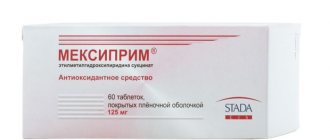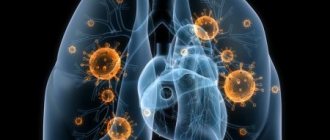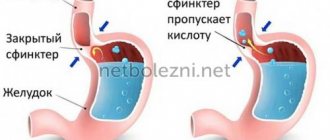The level of drug addiction in society has reached epidemic proportions. This is facilitated not only by the propaganda of the use of psychostimulants in cinema and literature, but also by the availability of many narcotic substances. One of the most popular “legal” drugs among young people, which can still be purchased at the pharmacy, is ketamine.
Ketamine is a drug intended for anesthesia during surgery, as well as for pain relief when the use of other anesthetics is contraindicated. The peculiarities of ketamine and its effect on human consciousness have made the drug extremely attractive to drug addicts. A relatively inexpensive analogue of LSD, available at any pharmacy, instantly spread among young people looking for new experiences. Unfortunately, not all fans of this drug managed to wake up from the ketamine dream, with its magical images.
Story
In 1962, ketamine under the working name "CI-581" ( c
linical
i
nvestigation 581) [1] was first synthesized by American researcher Calvin Stevens (C. Stevens), working at Parke-Davis to create a safe anesthetic alternative to phencyclidine, which caused hallucinations, epileptic seizures and had neurotoxicity. First used clinically in 1965 by Corssen and Edward Domino. In the late 1960s, the drug was used by American soldiers in the Vietnam War. Approved for widespread use in 1970. Ketamine was the first non-inhalational anesthetic, the administration of which was accompanied by only minimal suppression of blood circulation and respiration. The drug was used in psychiatric and other scientific research throughout the 1970s, and two books were published in 1978 that had a significant impact on the popularity of ketamine. These are "Journey to a Bright World" by Marcia Moore and Howard Alltownian, and "The Scientist" by John Lilly. Both books describe the authors' personal experiences with using the drug as a drug[2]. From 1987 to 2000, there were 12 deaths associated with ketamine overdose in the United States and Europe. It continues to be used widely, including in veterinary medicine and for battlefield anesthesia in developing countries[3].
In the USSR and Russia
In the USSR, research on the use of ketamine for the treatment of alcoholism and drug addiction was started in 1984-1985 by Evgeny Krupitsky. They continued for almost two decades until Russian legislation regarding the medical use of ketamine was tightened. In Russia, ketamine has become widespread as a drug since the early 1990s, when a lot of so-called psychedelic literature appeared in the country, and other known hyperstimulants - such as LSD - were practically absent from the illegal market.
After the adoption of Federal Law No. 3-FZ of January 8, 1998 “On Narcotic Drugs and Psychotropic Substances,” ketamine was included in the list of psychotropic substances. After the formation of the Federal Drug Control Service in 2003 and amendments to the law, an active anti-ketamine campaign began against its use in veterinary medicine[4]. Its use in medicine is limited by increased supervision by the Federal Drug Control Service and significant financial costs for storage: it can only be used by licensed clinics, including veterinary clinics, which have a safe with double alarm for storage[5]. In Russian veterinary medicine, ketamine was used as the main means of anesthesia by most veterinarians as one of the most effective and gentle anesthetics, but after 2003, due to bureaucratic obstacles, it is practically not used[4][5], this caused numerous protests from advocates, hobbyists and pet owners animals, veterinarians, but government bodies have still ignored their arguments for 10 years[4].
The situation around the drug is therefore often called the “ketamine wars”[4][6][7]. For example, only one veterinary clinic out of 300 registered in St. Petersburg managed to obtain a license to use ketamine and its hydrochloride[6]. However, some doctors believe that the drug is not of interest to drug addicts, as it causes unpleasant hallucinations[5]. Over the course of a decade, numerous veterinarians have been prosecuted in “ketamine cases.”[8] Their peak occurred in 2003-2004, when criminal cases were initiated almost monthly [8], including drug control officers who staged provocations against some veterinarians and then brought their cases to court, for example, one of such high-profile cases was related to A Ducoy (was found guilty, received a year's probation, but due to changes in the circumstances of the case (while the case was dragging on, veterinarians were already allowed to use ketamine) Alexander Ducoy was immediately released from punishment)[4][8]. Until 2006, there were attempts to bring veterinarians to criminal liability even on such charges as “distribution of drugs” among domestic animals, which the investigative authorities presented as “drug users”[4][7], in order to avoid the initiation of similar criminal cases in the resolution of the Plenum of the Supreme Court of the Russian Federation dated June 15, 2006 No. 14 “On judicial practice in cases of crimes related to narcotic drugs and psychotropic substances” it was stated that: “In cases where a person uses an illegally acquired narcotic drug or psychotropic substance for the purpose of treating animals (for example, ketamine, ketamine hydrochloride), his actions do not contain signs of a crime entailing criminal liability for the illegal sale of these drugs or substances”[7]. Later, some veterinarians were accused of attempting to distribute the “drug”; in recent years, about 10 criminal cases related to its use have been opened; in three cases, the accused received different prison terms. The most severe sentence was handed down to A. Shpak: he was sentenced to 8 years in a maximum security colony for sending ketamine to “another veterinarian” at the persistent requests of the latter, who turned out to be a drug control officer. The case caused a wide public outcry and protests were held in defense of the veterinarian[4][ 5][8][9][10][11]. Alexander Shpak was released on parole in August 2020.[12]
Physicochemical characteristics
Ketamine crystals
Ketamine is a structural analogue of phencyclidine[13]. Externally, it is a white or almost white crystalline powder with a weak characteristic odor; pKa 7.5[14]. As a hydrochloride, it is readily soluble in water[15]:122 and is available as a 3.5-5.5 solution containing 10 mg/ml in isotonic sodium chloride, as well as in multi-dose vials of 50 or 100 mg/ml, which contain 0.1 mg/ml benzethonium chloride as a preservative. The ketamine molecule contains a chiral center that forms two optical isomers. The S(+) isomer has a more powerful anesthetic and analgesic effect, causes less side effects and faster recovery of the body, although its pharmacokinetics and pharmacodynamics are similar to those of the racemic mixture or the R(-) isomer [16][17]. In practice, a racemic mixture of two isomers is more often used[18]:345.
Let's sum it up
Thus, ketamine is an excellent anesthetic agent, which, due to its properties, is widely used in human and veterinary medicine. But because of its dangerous side effects, the drug has been the source of controversy for half a century. In addition, non-medical use as a drug can lead to serious neurological and urological disorders.
However, this anesthesia is indispensable if:
- the patient is in critical condition;
- it is necessary to perform anesthesia outside the operating room;
- the operating room is poorly equipped.
Pharmacodynamics
Mechanism of action
Ketamine is a non-competitive direct-acting antagonist of NMDA receptors [19], that is, it blocks the receptor ion channel itself. It inhibits the function of neurons in the association zone of the cerebral cortex and the thalamus (which switches sensory impulses from the reticular activating system to the cerebral cortex) and simultaneously stimulates parts of the limbic system (which is involved in the awareness of sensations), including the hippocampus[13]:142. In this case, functional disorganization of nonspecific connections in the midbrain and thalamus occurs - this condition is called dissociative anesthesia [20]. Clinically, this condition is manifested by the fact that the patient appears to be awake (opens his eyes, swallows, muscles contract), but he is not able to analyze sensory stimuli and respond to them. It has been proven that ketamine inhibits the transmission of impulses in the reticular formation of the medulla oblongata, blocking afferent nociceptive stimuli from the spinal cord to higher brain centers. Ketamine also binds to opioid receptors in the brain and dorsal horn of the spinal cord, which may explain its analgesic effect[14]. Greater activity in the cortex than in the thalamus may be due to the uneven distribution of NMDA receptors in the CNS[21]:96. Anticholinergic effects are manifested by bronchodilation, sympathomimetic effects, delirium and are partially eliminated by anticholinesterase drugs.
Effect on the central nervous system
After intravenous administration, ketamine produces anesthesia within 30-60 seconds, which lasts 10-15 minutes; when administered intramuscularly, it causes anesthesia in 3-4 minutes, which lasts 15-25 minutes [22]: 197. In this case, dissociative anesthesia occurs: the patient’s eyes may be open, the pupils are moderately dilated, and nystagmus is possible; Many reflexes are preserved, but they are not protective in nature. Thus, the corneal, cough and swallowing reflexes are not completely suppressed. Characterized by increased skeletal muscle tone, lacrimation and hypersalivation (increased salivation). Uncontrolled movements of the limbs, torso and head are possible, independent of surgical manipulations. To ensure anesthesia, plasma concentrations are individually variable: 0.6-2 mg/kg for adults and 0.8-4 mg/kg for children[23].
In addition, ketamine causes pronounced predominantly somatic analgesia at subanesthetic concentrations in the blood plasma. Amnesia often lasts up to 1 hour after regaining consciousness. The induction of anesthesia is smooth, but delirium may occur, which is accompanied by anxiety, disorientation and agitation. After intravenous administration of an induction dose of ketamine (2 mg/kg), awakening occurs after 10-20 minutes. However, complete restoration of orientation in person, place and time occurs after another 15-30 minutes, sometimes after 60-90 minutes [18]: 345. During the specified time, anterograde amnesia persists, but not as pronounced as with benzodiazepines. Psychomimetic side effects (for example, illusions, frightening dreams, delirium) may occur during recovery and for up to 24 hours. Their frequency decreases with the elimination of verbal and tactile irritation of the patient during the recovery period, as well as with the combined use of opioids, buterophenones, benzodiazepines[ 24] or physostigmine; however, unpleasant dreams may persist. Children and the elderly have nightmares much less frequently.
Ketamine dilates cerebral blood vessels, increases cerebral blood flow (by approximately 60%), cerebral oxygen consumption (PO2) and intracranial pressure (ICP)[25]. The sensitivity of cerebral vessels to carbon dioxide is preserved, so hypercapnia attenuates the ketamine-induced increase in ICP[26]. However, there is currently no consensus on the ability of ketamine to increase ICP, particularly in patients with brain and spinal cord injuries. Increases in PMO2 and cerebral blood flow can be prevented by administration of thiopental[27] or benzodiazepines[28].
When ketamine is used, a characteristic EEG pattern appears: the α rhythm is suppressed and θ and δ waves dominate, which reflects the excitation of the central nervous system and epileptiform activity in the thalamus and limbic system (but not in the cortex) [15]: 122. In addition, δ waves indicate analgesic activity. The appearance of δ activity coincides with the loss of consciousness. In high doses, ketamine can cause bursts of suppression[18]:345. Ketamine increases the amplitude of cortical SSEP responses and, to a lesser extent, their latency. Responses to brain stem SEPs are suppressed.
Effect on the cardiovascular system
When ketamine is administered, blood pressure increases by an average of 25%, heart rate by an average of 20%, as well as cardiac output, cardiac output, and myocardial oxygen consumption[29]. In a healthy heart, increased oxygen demand is compensated by increased cardiac output and decreased coronary vascular resistance[30]. The positive inotropic effect may be due to an increase in inward calcium current modulated by cAMP. Ketamine can significantly increase pulmonary artery pressure, pulmonary vascular resistance, and intrapulmonary shunt. The hemodynamic effects of ketamine are independent of dose, and repeated administration of the drug causes lesser or even opposite effects.
The mechanism of this effect of ketamine on blood circulation is not entirely clear. But most authors believe that this mechanism is of a central nature[18]. There is evidence that ketamine suppresses baroreceptor function through its effect on the NMDA receptors of the nucleus of the solitary tract [31]. There is also a sympathetic-neuronal release of norepinephrine, which is found in the venous blood. Central sympathetic stimulation usually prevails over the direct negative inotropic effects of ketamine[21].
Ketamine has a similar effect on hemodynamics in cardiac pathology, which should be taken into account in conditions indicated in the contraindications. On the one hand, ketamine has a direct depressant effect on the myocardium, which manifests itself during sympathetic blockade (for example, in spinal cord rupture) or depletion of catecholamine stores (for example, in the terminal phase of shock). On the other hand, indirect stimulation of blood circulation makes ketamine the drug of choice for acute hypovolemic shock.
Description
Ketamine solution for injection
is a drug that has a general anesthetic (narcotic) and analgesic effect when administered intravenously and intramuscularly. In doses of 1.5-4 mg/kg it is used as a powerful psychoactive substance.
The drug can also act as an effective antidepressant[32]. Since the dose required to treat depression is lower than the dose at which psychoactive properties begin to appear [ clarify
][
which?
] ketamine, it can be used as an antidepressant. Currently, ketamine is not approved by the FDA for the treatment of depression, nor is it used in psychiatric practice in Russia. As of 2020, esketamine, the S(+) enantiomer of ketamine, is in phase III clinical trials as a treatment for major depressive disorder via intranasal administration[33][34].
In the body, ketamine is metabolized by demethylation. The main part of the biotransformation products is excreted within 2 hours in the urine, but a small amount of metabolites can remain in the body for several days. No accumulation is observed with repeated administration of the drug.
The minimum effective dose of ketamine when administered intravenously is 0.5 mg per 1 kg of body weight, while consciousness turns off after 1-2 minutes and the effect lasts about 2 minutes, at a dose of 1 mg/kg it lasts about 6 minutes, and at a dose 2 mg/kg - over 10-15 minutes.
When administered intramuscularly, the effect occurs more slowly, but it is longer lasting (at a dose of 6-8 mg/kg, the effect develops after 6-8 minutes and lasts 30-40 minutes).
The analgesic effect of ketamine usually develops when administered into a vein over 10 minutes. and lasts approximately 2-3 hours. When administered intramuscularly, the effect is longer lasting. The drug reduces somatic pain sensitivity more and less visceral pain sensitivity, which should be taken into account during abdominal operations.
Ketamine is used for mononarcosis and combined anesthesia, especially in patients with low blood pressure, or when it is necessary to maintain spontaneous breathing, or for mechanical ventilation with respiratory mixtures that do not contain nitrous oxide. It is indicated in emergency surgery and at the stages of evacuation, in particular in patients with traumatic shock and blood loss (due to rapid induction of anesthesia and the absence of respiratory depression and cardiac stimulating effect), during various surgical operations (including cardiac surgery), with combined intravenous anesthesia, as well as for endoscopic procedures, cardiac catheterization, minor surgical procedures, dressings, including in dental, ophthalmological and otorhinolaryngological practice.
There is evidence of the successful use of ketamine in obstetric practice during cesarean section.
Ketamine is administered intravenously (in a stream at once or fractionally and drip) or intramuscularly. Adults are administered intravenously at the rate of 2-3 mg, intramuscularly - 4-8 mg per 1 kg of body weight. To maintain anesthesia, ketamine injections are repeated (0.5-1 mg/kg intravenously or 3 mg/kg intramuscularly).
Maintaining general anesthesia with a continuous intravenous infusion of ketamine is achieved by administering it at a rate of 2 mg/kg per hour. This method is carried out using infusion pumps or by drip administration of a 0.1% solution of ketamine in an isotonic solution of glucose or sodium chloride (30-60 drops per minute).
In children, ketamine is used for induction of anesthesia for various types of combined anesthesia. Intramuscularly administered once at a rate of 4-5 mg/kg in the form of a 5% solution (after appropriate premedication). For basic anesthesia, a 5% solution is administered intramuscularly or a 1% solution intravenously in a stream at once or a 0.1% solution dropwise (at a rate of 30-60 drops per minute). Intramuscularly administered to newborns and infants at a rate of 8-12 mg/kg, children aged 1 to 6 years - 6-10 mg/kg, from 7 to 14 years - 4-8 mg/kg. It is administered intravenously at a rate of 2-3 mg/kg. Anesthesia is maintained with repeated injections of 3-5 mg/kg intramuscularly or 1 mg/kg intravenously. Anesthesia can be maintained by drip intravenous administration of a 0.1% ketamine solution (30-60 drops per minute).
Ketamine can be used in combination with neuroleptics (droperidol, etc.) and analgesics (fentanyl, promedol, depidolor, etc.) In these cases, the dose of ketamine is reduced.
When using ketamine, it is necessary to take into account the characteristics of its general effect on the body. The drug usually causes an increase in blood pressure (by 20-30%) and an increase in heart rate with an increase in cardiac output; peripheral vascular resistance decreases. Stimulation of cardiac activity can be reduced by the use of diazepam (Sibazon). Typically, ketamine does not depress breathing, does not cause laryngo and bronchiolospasm, and does not suppress reflexes from the upper respiratory tract: nausea and vomiting, as a rule, do not occur. Respiratory depression may occur with rapid intravenous administration. To reduce salivation, a solution of atropine or metacin is administered.
The use of ketamine may be accompanied by involuntary movements, hypertonicity, and hallucinatory phenomena. These effects are prevented or relieved by the administration of tranquilizers, as well as droperidol.
With intravenous administration of a ketamine solution, pain and redness of the skin along the vein are sometimes possible; upon awakening, psychomotor agitation and relatively prolonged disorientation are possible.
Do not mix ketamine solutions with barbiturates (precipitates will form).
Consequences of ketamine
It is important to note that any negative consequences of ketamine use occur only with repeated or chronic use of this drug; they include a number of neurological and urological effects.
Neurological consequences are represented by various types of cognitive disorders, primarily memory impairment. Ketamine causes dose-dependent impairment of both short-term and long-term memory (particularly episodic and procedural). Chronic use of ketamine also causes mental disorders with the formation of delusional thoughts in the form of a conspiracy theory. Some animal studies demonstrate significant neurotoxicity from chronic ketamine use, resulting in the destruction of nerve cells in the brain.
The urological effects of ketamine are caused by the irritating effect of the final metabolism products of the drug on the urinary tract with the development of ulcerative cystitis, urinary incontinence, and painful urination with blood.
With the non-medical use of ketamine, cases of drug overdose often occur, causing respiratory arrest and death if medical care is not provided in a timely manner.












